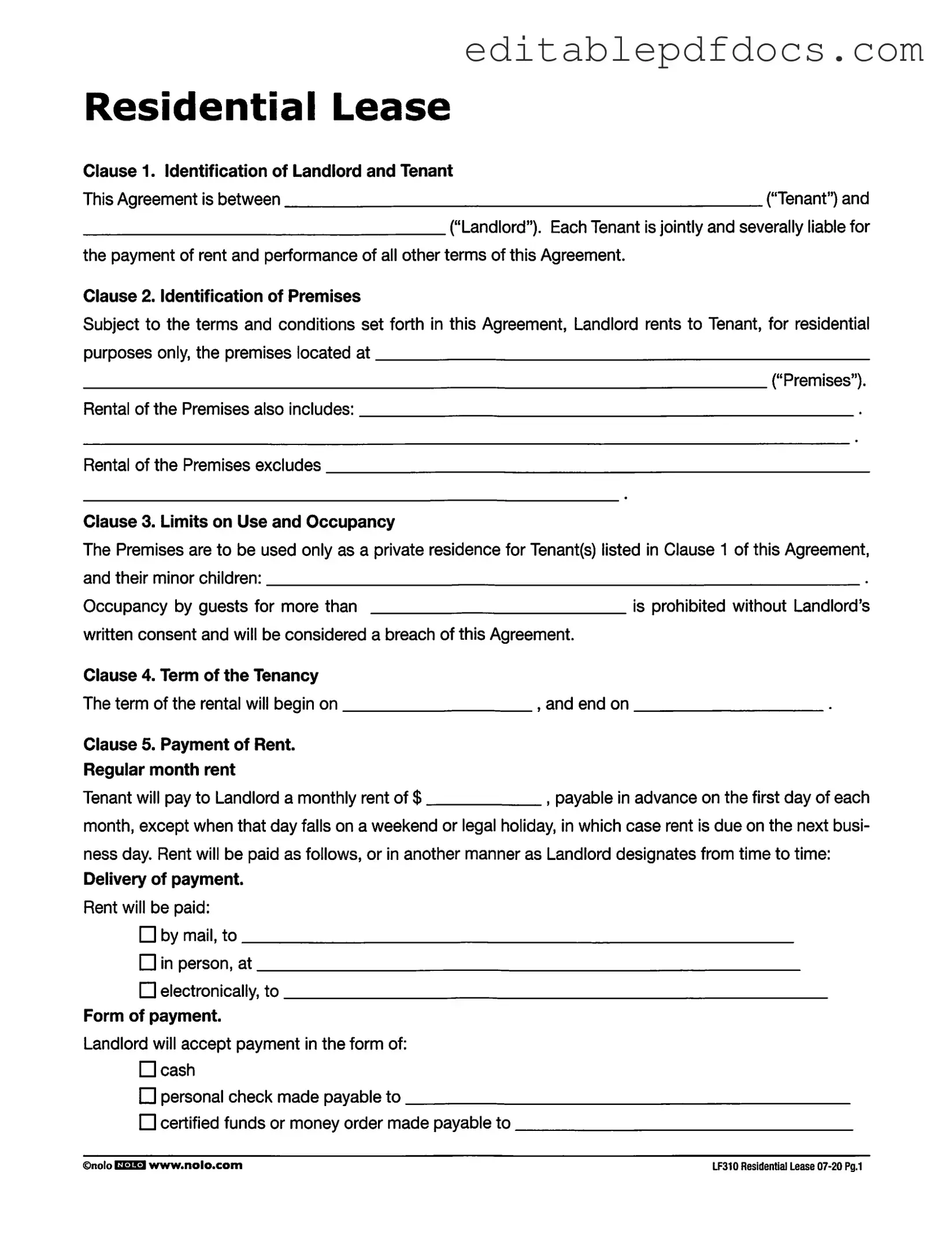Filling out the LF310 Residential Lease form can be a straightforward process, but many individuals make common mistakes that can lead to confusion or disputes later on. One frequent error is failing to clearly identify both the Landlord and Tenant in Clause 1. It’s essential to provide complete names, as this establishes who is legally responsible under the agreement. Leaving this section blank or using nicknames can create complications, especially if legal action becomes necessary.
Another common mistake occurs in Clause 2, where the Identification of Premises is specified. Tenants often forget to include the full address of the rental property. Omitting this information can lead to misunderstandings about the location being rented, which may complicate matters if disputes arise. Always double-check that the address is accurate and complete.
In Clause 3, which addresses Limits on Use and Occupancy, tenants sometimes neglect to list all authorized occupants. This can lead to issues if guests stay for an extended period without written consent. It’s crucial to specify who is allowed to live in the premises, as unauthorized occupants can be grounds for terminating the lease.
Clause 5 outlines the Payment of Rent, yet many people make the mistake of leaving the rental amount blank or incorrectly calculating the prorated rent for the first month. This can create confusion about payment expectations. Make sure to fill in the correct amounts and clarify the payment method, whether it’s by check, cash, or electronic transfer.
Additionally, tenants often overlook the details regarding Late Charges in Clause 6. Not specifying the number of days after which a late fee applies can lead to disputes. It's important to clearly state this period and the exact amount of late fees to avoid misunderstandings later on.
Clause 8 discusses Security Deposits, and a common error is failing to specify the amount of the deposit. This can create issues when it comes time to return the deposit after the tenancy ends. Ensure that the correct sum is filled in and that both parties understand the terms regarding the return of the deposit.
Finally, in Clause 10, tenants often forget to acknowledge the Prohibition of Assignment and Subletting. It’s important to understand that violating this clause can lead to termination of the lease. Make sure to read and understand the implications of this clause to avoid future complications.
